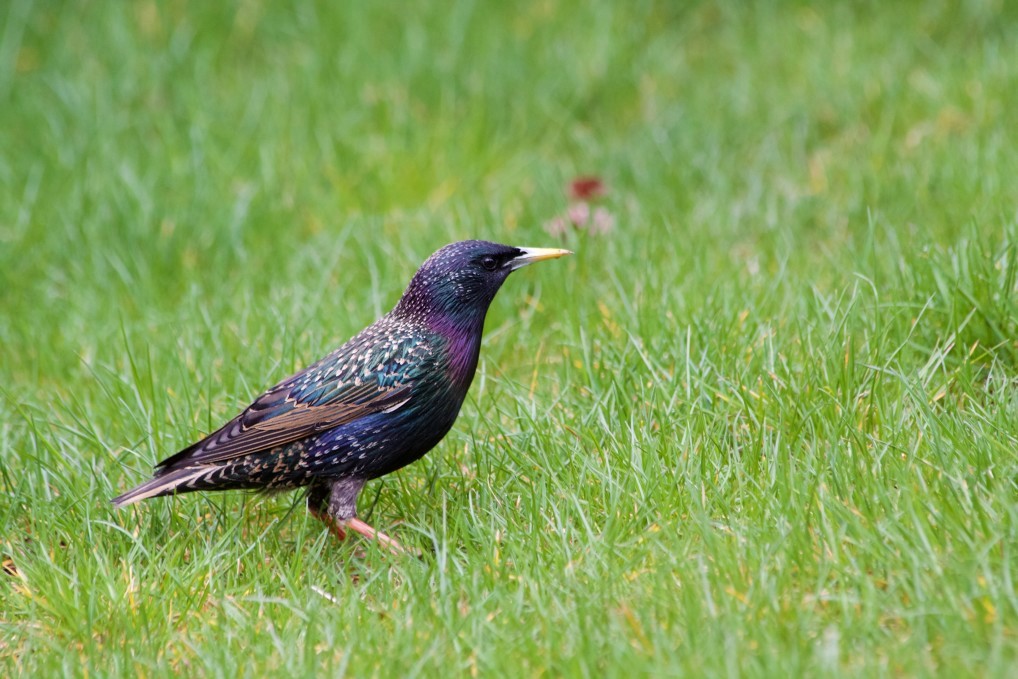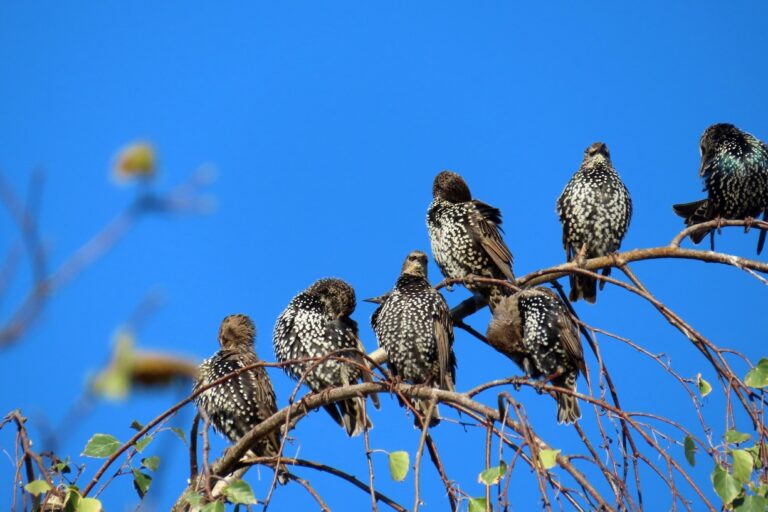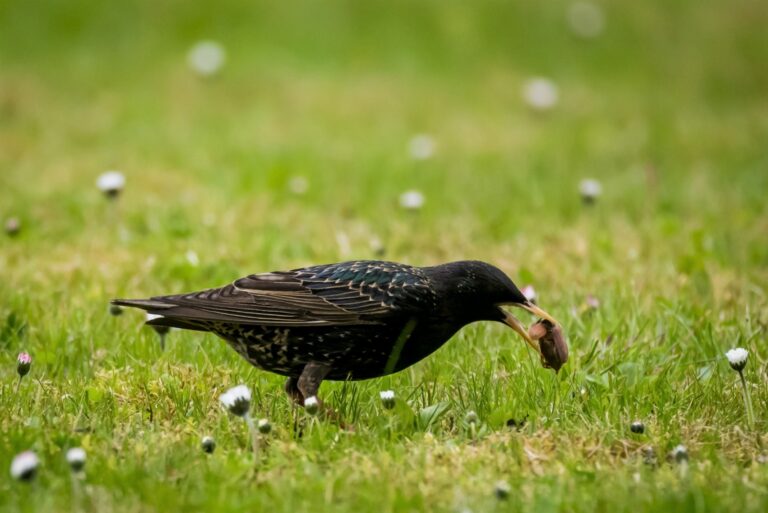
April 25, 2021
Are Starlings Bad For Your Lawn?
European starlings are considered one of the most common nuisance and invasive bird species found throughout the United States.
No matter which area you live in, whether it’s a rural or urban area, starlings can be a real problem for residential as well as for commercial properties. Starlings can be a nuisance due to their nesting, eating, and roosting habits.
These purplish-green birds with yellow beaks and white spots are quite pretty to look at, however, they are despised by lawn owners, ecologists, and bird watchers alike. Starlings are loud, talkative, annoying, very aggressive, and they are just about everywhere!
They can be a pain to clean up after, not to mention the damage caused to your house and the appearance of your lawn.
Why Are Starlings Bad For Your Lawn And Yard?
When European starlings are in the flocking phase and congregate in large numbers, they can become a nuisance. Thousands of them will overwhelm structures, trees, and lawns. Starlings roosting in urban locations can cause health concerns, waste contaminated ground, odors, and noises.
Their droppings are hazardous and can spread diseases to humans and pets. When walking on the lawn, you or your dog can accidentally bring the bird waste into the home.
Dried droppings release dust that can cause bad health issues such as Histoplasmosis (fungal respiratory disease), or other illnesses particularly in those suffering from asthma. Bacteria and parasites in the bird droppings also pose a health risk.
If many starlings are foraging around your yard, they might bring in pests as these birds often carry ticks and mites, or other parasites. The pests can then transfer to people and their pets.

Do Starlings Damage Lawns?
Starlings can damage grass turf as they search for food. The root systems of the grass might be torn due to pulled roots while the birds are looking for worms.
Large flocks can destroy crops in your garden and disturb your newly seeded lawn when the birds feed on seeds and berries.
Also, their waste can possibly spread invasive weed seeds around your yard.
On the other hand, starlings can also be beneficial to your lawn.
Homeowners usually complain about starlings settling in numbers onto lawns. But these birds are actually helping the lawn by eating harmful pests, and thus, acting as a natural form of pest control.
Starlings love to eat leatherjacket bugs, which are the larvae of crane flies or daddy long legs. Leatherjackets are considered a pest as they damage crops, eat plant roots, and make the lawn look unsightly. So, the more starlings in your yard, the better off your lawn will be in terms of pest control.
In addition to getting rid of destructive pests, starlings will also naturally aerate the soil while poking holes in your lawn.
Why Do Starlings Peck Your Lawn?
Starlings are mostly ground foragers that feed on a variety of critters living in the soil. They tend to prefer open spaces and surroundings with not too many trees or shrubs. These birds also avoid high grass.
If you notice many starlings pecking your lawn, this could indicate that you have a pest problem in the lawn.
Starlings are commonly found feeding on grubs, cutworms, sod webworms, armyworms, and chinch bugs. When these worms are active, birds will happily feed on them.
If you don’t deal with the pest issues, the pests are most likely to do more damage than the starlings.

What Do Starlings Eat Out Of The Grass?
Starlings primarily forage on the ground in open areas, probing in soil and grass with their beaks.
Starlings are known to consume a varied diet including many types of bugs, larvae, seeds, corn, grains, and berries. However, they prefer catching insects, if available.
During summer, they prefer eating flies, caterpillars, beetles, spiders, snails, grasshoppers, earthworms, and other invertebrates.
In the fall and winter months, they will choose a wide variety of fruits in trees, berries, and seeds. At this time, they will often come to bird feeders as well.
Starlings often flock shortly after grass mowing as they are attracted to all the bugs and seeds that get exposed in the short, freshly cut grass. When you stir up the lawn with the lawnmower, it’s easier for these birds to reach the worms and insects that they’re after.
It is advised to be persistent in starling control and start working on controlling these obnoxious birds before they have gained a strong attraction to your yard. This way, you will be more successful in eradicating them.
Starlings are a very invasive species that require the help of a professional to get rid of them for good. So, contact Westchester Wildlife to learn more about our bird control services, which include bird proofing, removal, and trapping.
Our experienced technicians at Westchester Wildlife will humanely trap and remove the invading starlings from your property. We are servicing Westchester, Dutchess, and Putnam Counties in New York, as well as Fairfield County in Connecticut.
